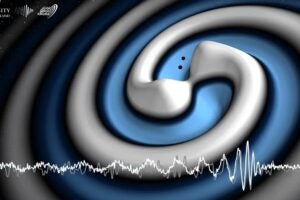AUSTIN, Texas–As the world watches with renewed interest the activities of Sen. John Glenn and the Space Shuttle Discovery, researchers at The University of Texas at Austin College of Pharmacy are awaiting today’s scheduled return of Discovery, focusing on an experiment under way aboard the mission that may help UT researchers save lives back on Earth by developing more effective drugs to fight cancer.
Dr. Edward Piepmeier, assistant professor of pharmaceutics at UT Austin, and his team of undergraduate and graduate research assistants are awaiting Discovery’s return to secure samples of Jurkat cells, human leukemia cells, to determine what effect, if any, the cells demonstrate after exposure to various levels of microgravity. The experiments Piepmeier awaits were conducted by Glenn on this history-making voyage.
The cells aboard Discovery will help to further studies conducted by Piepmeier’s research team earlier this year when human cells similar to those on the space mission were carried on the KC-135, a modified military aircraft that simulates the effects of microgravity by the manner in which it flies. Once the KC-135 reached microgravity, the student researchers added doxorubicin, a cancer fighting drug used in multi-drug resistance studies, to the cells. This project is supported by the Texas Consortium for Materials Development in Space.
One of the troubling aspects of fighting cancer cells is the ability of the cells to develop resistance to conventional drug therapies. This resistance is believed to be linked to the cells’ cytoskeleton, which influences cell protein involved in breaking down and eliminating the drug.
During the Discovery flight, Glenn will freeze some of the Jurkat cells at various points in the mission. Back on Earth, meanwhile, the UT researchers will freeze other Jurkat cells utilizing similar equipment to that Glenn is using in space. Once the mission returns to Earth on Friday, the space-flight cells will be returned to Piepmeier’s lab later this month. He and his team then will compare the space cells to those frozen on Earth to determine differences in cell structure, including changes in the cytoskeleton.
Preliminary findings from the KC-135 experiments indicate that drugs added in conditions of microgravity initially diffuse slower. While scientists have studied drug resistance for years, Piepmeier explained that factors causing resistance may be more easily identified in the zero-gravity environment of space, where cell metabolism is altered.
“The KC-135 experiments showed how drugs influse into cells over a relatively short period of 20 seconds, while the space shuttle experiments help researchers understand how drugs are metabolized and eliminated from cells under microgravity conditions,” Piepmeier explained.
“One of the most important problems in cancer treatment today is the resistance that cancer cells develop to drugs, making these drugs ineffective in combating the disease,” Piepmeier said. “If we can determine how to break through the cells’ resistance, we can make great inroads in increasing the effectiveness of the drug therapies and in saving more lives.”



